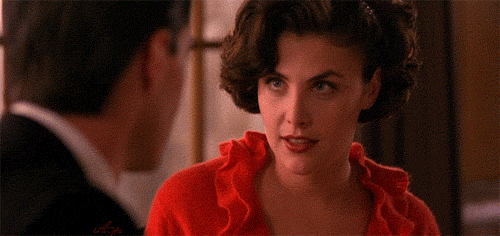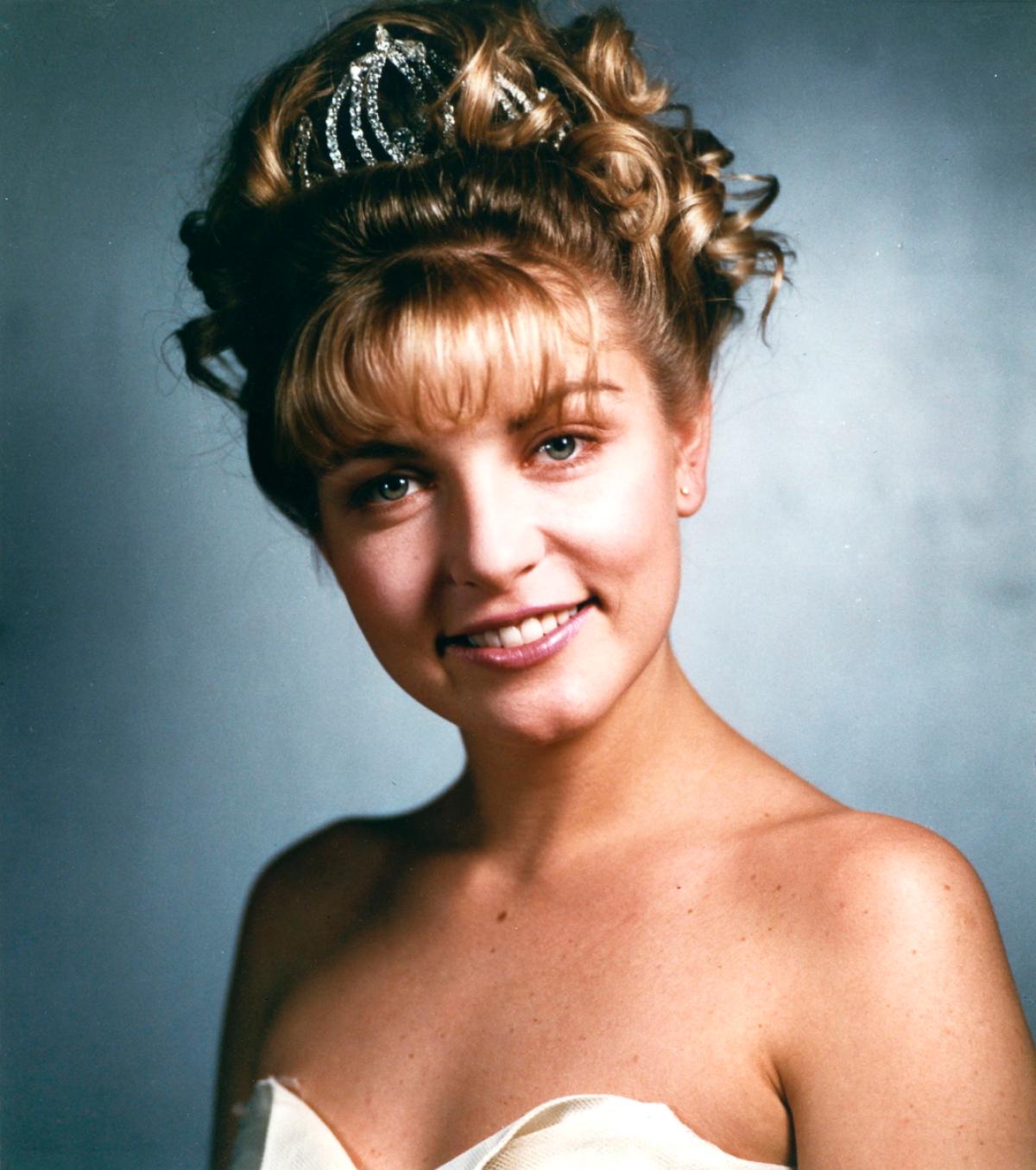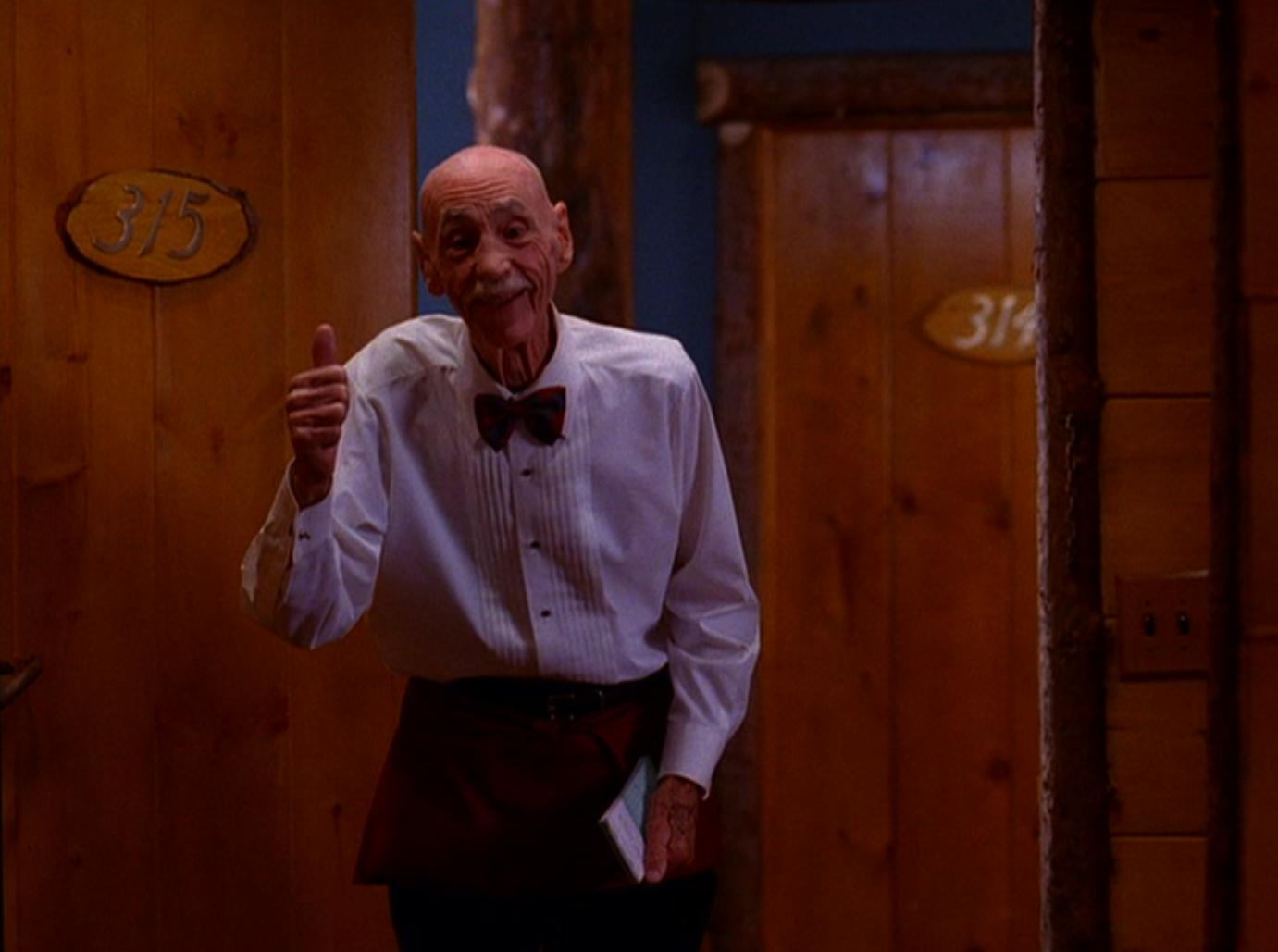Twin Peaks, the uncanny, and the re-enchanted West
26 years ago, when Twin Peaks first aired, I was a 13-year old boy, in my first year at an all-male boarding school. I was coming up on testosterone, discovering booze, porn and drugs, yearning for escapism. And I found it in Twin Peaks. I remember racing to the TV room after Sunday lunch, slamming in the VHS cassette with the previous night's episode, lying on the floor (the seats were reserved for older boys) and slipping blissfully out of boarding school and into another world at the first note of Angelo Badalamenti's theme tune.
I became a fully paid-up Peak Freak. I bought the soundtrack, I bought Laura Palmer's diary, I watched the movie, I watched all his movies. In 2003, I bought the DVD and watched and re-watched the show. In the last few years, I went to Twin Peaks-themed cabaret nights and won second place in a Twin Peaks fancy dress competition.
What was it that so possessed me about Twin Peaks? Well, it was at least in part the hotness of the actresses. The town of Twin Peaks was peopled by a lot of incredibly hot 20-something women, many of them playing high-school girls. This was a frank celebration of high-school sexuality - teenage busts under 50s jumpers. Like Hitchock and Fellini, there's something a bit pervy and creepy about David Lynch, and his propensity to use his camera to explore his sexual kicks (hot women, velvet curtains). In the original script for Twin Peaks, Agent Cooper hooks up with schoolgirl Audrey (this was deemed too Humbert Humbert by Kyle Machachlan).

Yet plenty of shows in the 1990s had a parade of hot women - Baywatch, above all. Twin Peaks really gripped me because it was my first taste of independent or arthouse cinema. 80s cinema was often a neo-1950s celebration of teenage suburbia - The Breakfast Club, Ferris Bueller, Adventures in Baby-Sitting, Back to the Future. David Lynch both celebrated that small-town high-school America, and explored the darkness that lay beneath it - drugs, incest, murder, demons.

Twin Peaks, like Blue Velvet, was all about the teenage journey beyond childhood innocence to a terrible knowledge of the evil and suffering in the world. In Blue Velvet, the hero Jeffrey is a teenage Hamlet figure, driven by the death of his father to play the amateur detective, only to be confronted by terrifying daemonic forces both outside him and within himself. In Twin Peaks, we see the photo of Laura Palmer, the smiling high-school prom queen, then gradually uncover the darkness behind that smile.
We discover the sex and violence lurking within the American nuclear family. That's something Alfred Hitchcock explored in films like Psycho and Shadow of a Doubt - both he and Lynch loved the shot of the staircase in the suburban household, suddenly loaded with dread. The homely is made un-homely and threatening.

We're taken into a dreamworld beneath everyday reality. I think David Lynch is unrivalled in its ability to summon up the world of dreams. He's a master at creating the Uncanny, the un-homely.
The aesthetics of the Uncanny were first laid out by Sigmund Freud in his 1919 essay, Das Unheimliche - an essay that deeply inspired Stanley Kubrick while he was making The Shining. Freud begins by exploring the etymology of the German word unheimliche, the opposite of heimliche which means ‘homely’ or ‘familiar’. He suggests that the uncanny is the fear we feel when the homely is made strange and frightening to us. Freud then explores some of the plot-devices by which 19th-century Gothic writers produced uncanny feelings in us – ghosts, dopplegangers, telepathy, curses, apparitions in mirrors, inanimate objects coming to life, events from the past repeated, numbers repeated, symbols and patterns repeated, all of which produce the over-riding sense of “something fateful and unescapable”, as in a dream.
You can see how important these techniques are in both Kubrick and Lynch's work, at summoning up dreamworlds which hint at hidden meanings or correspondences, without ever fully explaining them
Mirrors, for example (from left, Twin Peaks, Twin Peaks, Mulholland Drive and The Shining)
Weird patterns (from left, Eraserhead, The Shining and Twin Peaks)
Numbers (from The Shining and Twin Peaks...There are loads of portentous number references in the new Twin Peaks, by the way - the giant tells Dale to remember 340, we see an addict intoning 199, we see a magic phone-box with the number 3 on it...what does it all amount to? Almost certainly nothing).
Weird symbols, like the dancing lady wearing the blue rose in Twin Peaks: Fire Walks With Me (the blue rose apparently symbolizes an FBI case involving the supernatural)
Events from the past happening again.

Dopplegangers (or, in the new series of Twin Peaks, Tripplegangers - yes there are three versions of Dale Cooper running around).
There are also inanimate machines that seem oddly animate - electric wires, radiators, phones and plug sockets that seem to channel spirits....It's all very unheimliche.
And then, in Twin Peaks, there are the spiritual visions and dream-sequences, which were so utterly weird in 1991 but which have become more normal in TV drama since, through shows like The Sopranos, Six Feet Under or Stranger Things.

Lynch, like Kubrick and Hitckcock, brought the weird world of surrealism into mainstream American culture. Like the 1920s surrealists, he used techniques of ecstasy to take himself into trance states and plumb his subconscious for creativity. The surrealists of the 1920s used techniques like auto-hypnosis, drugs and automatic writing, while Lynch uses Transcendental Meditation and also an openness to the random, spontaneous and accidental - he cast Frank Silva as the daemonic villain Bob in Twin Peaks when he happened to witness him working on the set as a carpenter.

Above all, I love Twin Peaks because it summons up an enchanted place in a disenchanted age.
Freud wrote that the Uncanny works on us emotionally because it reconnects us to our pre-modern animist beliefs. The uncanny, he writes, connects us to
the old animistic conception of the universe, which was characterized by the idea that the world was peopled by the spirits of human beings, and by the narcissistic over-estimation of subjective mental processes (such as the belief in the omnipotence of thoughts…the carefully proportioned distribution of magical powers)…It would seem as though each one of us has been through a phase of individual development corresponding to that animistic stage of primitive man, that none of us has traversed it without preserving certain traces which can be re-activated.
Freud can't write about animism without distaste - it's infantile and regressive in his view. Kubrick and Lynch, by contrast, are more optimistic in their exploration of the spirit world. The Shining and Twin Peaks are actually optimistic. How? Because they suggest we're not just matter, we're also spirit. They suggest we're in a world filled with demons and darkness, but also with transcendent forces of goodness and light. We're not alone - there are greater forces out there, which can possess us for good or ill. And we're in a universe where the soul doesn't necessarily end at death - the journey is longer and stranger, as Agent Cooper discovers on his journey through various bardos. It's not a flattened world. It's a world thick with spirit.

That is a hopeful vision, to me, and a more exciting vision than the End of History we supposedly arrived at in the 1990s (when Twin Peaks first aired), with the triumph of secular neoliberal democracy. I love liberal democracy - I would die for it - but it can feel technocratic, self-absorbed, hyper-individualist, trivial, materialist, consumerist, spiritually flat, and utterly lacking in transcendence. In some ways, our culture is anti-transcendent - our highest value is the individual, and death is definitely the end. Compared to that, the world of Twin Peaks was Romantic, exciting, mysterious, transpersonal. The self is porous, the owls are not what they seem. A small town in America could be a portal to multiple universes.
Now of course, a world of demons, angels and magic can easily be infantile, dangerous, completely irrational. ISIS terrorists live in a more enchanted world, in which they are the God-fuelled superheroes, and anyone who opposes them is a demon who needs to be exterminated. Sub-Saharan African villagers live in a more enchanted world, and are not above sacrificing the occasional child to placate the nature spirits. The more stupid supporters of Trump live in an enchanted world - the conspiracy-nut world of X Files, where a shadowy cabal headed by Hilary Clinton and the Illuminati run the world from behind the scenes
I think there is a third choice, between a culture of mad fundamentalist transcendence, and a culture that is anti-transcendent. And that's a culture of mature, skeptical transcendence.
A society with a mature vision of transcendence helps us to go beyond our ego while recognizing the darkness in our subconscious, so we don't project our darkness outwards onto outsiders. A culture of mature transcendence has resources - the arts, religion, spirituality, psychology - that help us consciously navigate the dreamworld within us, and to confront and integrate the darkness in our souls on our journey to wholeness. They help us find transcendence without insisting their route is the only route, and any one else's route is evil. David Lynch's work has that psychological and spiritual maturity. We need more art like that, if we're to evolve from an anti-transcendent culture into a culture of mature transcendence.










